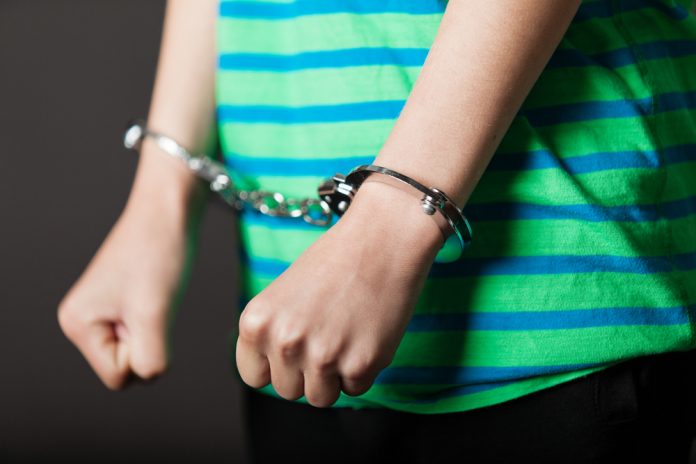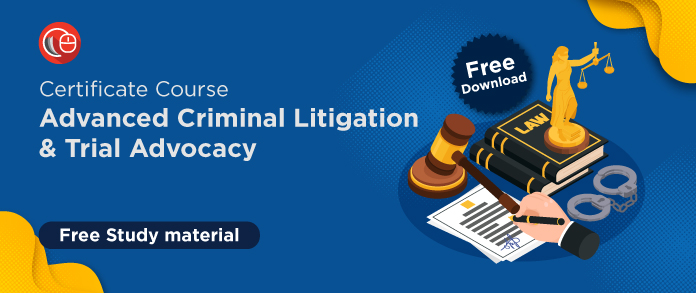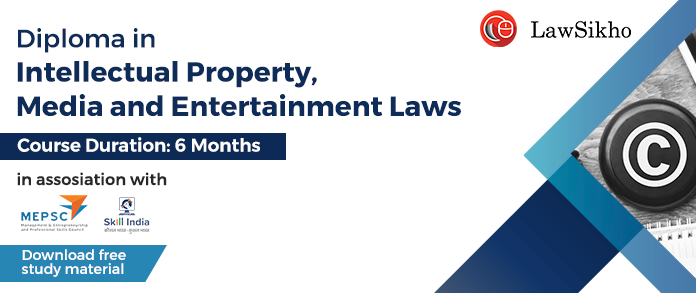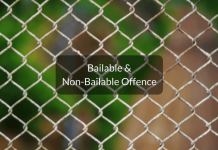This article is written by Amandeep Kaur, a student of Symbiosis Law School, Pune; and Monesh Mehndiratta, of Graphic Era Hill University, Dehradun. The authors of this article have discussed Juvenile delinquency in India and the legislation available. The article explains the meaning of juvenile delinquency, its causes, and the relevant laws in India regarding this. It also explains the juvenile justice system prevailing in the UK and the USA.
It has been published by Rachit Garg.
Table of Contents
Introduction
Have ever heard or seen a child stealing something from a shop or witnessed a minor assaulting or threatening somebody?
I am sure this might be shocking for you. You might also be questioning why a child would commit such unlawful or illegal acts. But let me tell you, it’s true.
A country’s future relies largely on its future generation. Whether a country would be a developed country in future or its growth would be static depends on its human resource. Thus, it is necessary to invest in the development of the citizens, especially the young generation which consists of children, adolescents and teenagers. If they are nourished well with love and care and moral values are imbibed in them, they will surely become law-abiding citizens. However, if they are neglected or involved in bad company or experience an abusive childhood, they might turn into a delinquent, i.e., one who shows disapproved behaviour or does not abide by the norms, rules and laws in a society, at a young age.
Children of tender age are delicate and mould themselves according to the circumstances they face. They could either come out and shine bright or become criminals. Thus, it becomes necessary to give importance to their development and growth. Any reason that could contribute to juvenile delinquency must be taken seriously, and efforts must be made to minimise such reasons. The present article deals with the meaning of juvenile delinquency, factors that are responsible for such acts and behaviours, laws prevailing regarding this, and the treatment of juveniles. It also provides initiatives or measures for the prevention of juvenile delinquency.
Meaning and Aim of the Juvenile Justice System
Adolescent Justice System
An adolescent is a youngster who isn’t yet mature enough to be viewed as a grown-up. Juvenile Justice manages the treatment of kids in the struggle with the law and furthermore takes a gander at the main drivers of culpable conduct and measures to avert such conduct.
Aims of Juvenile Justice
- It is based on the rights of the child.
- It applies the principle of restorative justice i.e. to restore the balance of a situation disturbed by crime rather than simply meting out punishment.
- This system puts the best interest of the child first.
- The primary objective of this system is to focus on the prevention of crimes and injustice done to juveniles.
Juvenile Delinquency
Juvenile Delinquency is the involvement of a kid who is between the age of 10 and 17 in illegal activity or behaviour. Adolescent misconduct is likewise used to allude to youngsters who display constant conduct of underhandedness or noncompliance, in order to be considered out of parental control, getting to be plainly subject to legitimate activity by the court framework. Juvenile delinquency is also known as “juvenile offending,” and each state has a separate legal system in place to deal with juveniles who break the law.
The term ‘delinquency’ is derived from the Latin word ‘delinquer’, which means ‘omit’. Juvenile delinquency refers to the disapproved behaviour of children and adolescents, where they tend to show criminal behaviour. In simple terms, it means deviance from the approved norms and laws in society, where children usually indulge in anti-social activities.
The term has an extensive meaning and also includes the hostile behaviour of a child. However, according to a settled principle of criminal law which is also applicable to international criminal law, “nullum crimen sine lege,” which means that an act of a person cannot become a crime and he or she cannot face punishment for that unless it is recognised or defined under the law. Thus, an orphan or abandoned child or a child with uncontrollable and aggressive behaviour cannot be said to commit a crime unless he does an unlawful or illegal act which is considered to be an offence under the existing law of the country in which it is enacted. These offences could include murder, rape, theft, kidnapping, assault, and so on.
This problem of juvenile delinquency is persistent in every country and thus, the issue of having a uniform definition of the term was identified by the United Nations. This resulted in the Second United Nations Congress on the Prevention of Crime and Treatment of Offenders which was held in 1960. The term was defined as, “ acts of minors due to which they violate criminal law and indulge in behaviour which is objected to and disapproved by society and law of the country in which they reside.”
Causes of juvenile delinquency
The problem of juvenile delinquency has become a hot issue for the world and persists in every country across the globe. In order to deal with this issue and uproot it from our society, it is imperative to understand the fundamental causes and reasons of juvenile delinquency.
Advancement of technology and economic growth
With the advancement of technology and the growth and development of society, there has been a change in the thinking process. There is a high influence of westernisation and modernisation on the lifestyle of people. Apart from this, with the establishment of industries, people started migrating from rural areas to urban areas and there arose the issue of slums, overcrowding etc. This further led to economic and financial problems for families.
To curb such problems, children engaged themselves either in child labour or deviant activities. This gave rise to juvenile delinquency. It has been observed that the temptation to live a luxurious life led youngsters towards wrongful means to fulfil their desires.
Family issues
Another major reason behind the increase in juvenile delinquency is family issues. Family is the first place to which a child is attached. Children usually learn from what they observe around them. If there is disintegration in the family, such as continuous fights between parents, lack of love and affection, broken families, etc., it will affect a child’s growth and development mentally, physically, and emotionally and would also lead to juvenile delinquency.
Once a child feels neglected by his or her own parents and relatives, it can cause him or her to commit crimes due to aggression and other negative feelings. Children at a tender age need affection, love, care, protection, and guidance. Families must emphasise preventing children from indulging in criminal behaviour and focus on their growth and development so that they become successful and law-abiding citizens. Adequate opportunities must be given to them by their parents to develop their personalities with proper education that is channelled correctly.
Changing patterns in lifestyle
A change in lifestyle is yet another reason for criminal behaviour in children. The immaterial and changing patterns in the lifestyle of people make it arduous for children and teenagers to adjust and revamp their family relations. They are mostly confronted with the issue of the generation gap due to which they detach themselves and develop apathy. They are also incapable of distinguishing between right and wrong i.e., become amoral. Apparently, they are misguided and end up choosing the immoral or evil path. Another reason for showing delinquent tendencies is the company of children. People with whom they spend most of their time can either shape their personalities into law-abiding citizens or turn them into criminals.
Another drawback of change in lifestyle is that most of the time, parents and children do not interact with each other. Parents are either too busy with their office work and schedules or struggling with their own complications in life as a result of which children are often neglected. This might induce frustration, anxiety and aggression in children. Thus, it is necessary that parents and children interact with each other and spend some quality time to comprehend the issues faced by children in their day-to-day lives. Parents must also listen to their children and be concerned to help them whenever they require it.
Biological factors
Biological factors like physiological and mental issues, low intelligence, a lack of understanding, etc. also lead to delinquent behaviour among children. It has been observed that girls usually attain puberty at a very young age and can easily become prey to sexual offences. Curiosity is another preeminent reason for delinquent behaviour among juveniles with respect to sexual offences like rape. Here comes the role of parents, teachers, and elders. They must educate their children regarding the biological differences between a male and female and answer all their questions regarding other biological processes and consequences of any illegal or unlawful act.
Poverty
When a child is not able to get the basic necessities of life, there is high chance that the child may indulge in delinquent acts to get those necessities. This means that poverty also contributes to juvenile delinquency. Failure to provide children with necessities like food, shelter, clothes, education, etc. can force them to earn money by hook or crook in order to get what they desire. People living in slums find it difficult to survive as they are not able to get even the basic necessities of life. Corruption is another major reason which contributes towards poverty which ultimately leads to increased instances of juvenile delinquency in society. Poor children often get involved in stealing, robbery and other criminal activities to help their families with basic necessities. The government must take initiatives to eradicate the problem of poverty and provide basic necessities like food, clothing, shelter etc to its citizens. Efforts must be made to provide quality education and quality training so that they can lead a good life in the future.
Other factors
Other factors like child labour, abusive childhood, traumatic experiences, financial issues, illiteracy, unsoundness of mind etc are also responsible for delinquent behaviour in juveniles.
Juvenile justice in other countries
Juvenile justice in the U.K.
Juvenile delinquency in the United Kingdom was considered a transient phase meaning that it would vanish with age. The penal reformists in the country adopted a different approach to the treatment of juveniles. The Ragged Industrial School Movement is considered to be the first initiative taken towards the prevention of juvenile delinquency. This movement led to the establishment of an industrial school for homeless, destitute, and delinquent children.
Miss Marry Carpenter, a famous social activist, is known for the significant effort that she made towards the prevention of delinquency in juveniles. She started a Ragged Industrial School in Bristol. Further, in 1838, a Parkhurst prison was established for the treatment of juveniles. The enactment of the Summary Jurisdiction Act, 1879 in the country, provided that a child under 7 years of age is incapable of committing a crime and hence, must not be convicted. In 1907, the Probation of Offenders Act, 1907 was enacted which empowered the courts to release juveniles in certain offences. Finally, the Juvenile courts were established in 1908 under the Children Act, 1908. These courts were empowered to deal with matters involving juveniles and take proper care and provide protection to the young offender.
Further, the Children and Young Persons Act, 1933, provided remand homes for the treatment of juveniles. Children below the age of 17 were kept in observation homes before the trial. It is noted that after the enactment of the Criminal Justice Act, 1982, the U.K. government liberalised the law relating to juveniles in order to abide by the guidelines of the United Nations in this regard.
Juvenile justice in the U.S.A
The history of juvenile courts in the USA starts with the appointment of state agents in 1869 who were responsible for taking care of juveniles. In 1878, this work was given to probation officers. Currently, each state in the country has one juvenile court and a specialised unit in the judicial service to deal with such matters. These courts are provided financial support by the local governments of each state. Further, Congress enacted the Juvenile Justice and Delinquency Prevention Act of 1974 to tackle the issue of juvenile delinquency.
These courts function in the following manner:
- The police first take the custody of a child offender and decide whether to keep the child in custody or not.
- The next duty of the police officer is to inform the court.
- During the trial, hearing is given to the probation officer as well.
- It is the duty of a probation officer that when a child is under his supervision, he must find a school or employment for the child. However, if the juvenile violates any condition during probation, he is sent to a certified school or children’s home.
Who are Juvenile Delinquents?
Juvenile delinquents are regularly youngsters between the ages of 10 and 17 who have carried out a criminal demonstration. There are two principal sorts of guilty parties: rehash wrongdoers and age particular guilty parties.
- Rehash Wrongdoers– rehash guilty parties are otherwise called “life-course constant wrongdoers.” These adolescent delinquents start culpable or hinting at other solitary conduct amid pre-adulthood. Rehash guilty parties keep on engaging in criminal exercises or forceful practices even after they enter adulthood.
- Age-particular guilty parties- Age-Specific Offenders indicate adolescent reprobate conduct starts amid youthfulness. Not at all like the rehash wrongdoers, in any case, the practices of the age-particular guilty party closes before the minor turns into a grown-up.
The practices that an adolescent shows amid youthfulness are frequently a decent marker of the kind of guilty party he will progress toward becoming. While age-specific offenders leave their delinquent behaviour behind when they enter adulthood, they often have more mental health problems, engage in substance abuse, and have greater financial problems than adults who were never delinquent as juveniles.
In the case of Gopinath Ghosh v. State of West Bengal, the accused had given his age as much above the cut-off age prescribed for being a child. However, in this case, the court not only allowed the plea of child status to be raised for the first time but also referred the matter to the sessions judge for a determination of the age of the accused. Approving this approach, the Supreme Court in Rajinder Chandra v State of Chhattisgarh, further laid down that the standard of proof for age determination is the degree of probability and not proof beyond a reasonable doubt.
Risk Factors and Predictors of Juvenile Delinquency
Numerous kids end up noticeably adolescent delinquents early, frequently between the ages of 6 and 12 years. Numerous adolescent practices amid the pre-high schooler and young years might be viewed as ordinary conduct for kids, as they extend their limits, and battle to build up their self discernment. There are, in any case, certain signs that a child may be going an awful way.
Indicators of adolescent misconduct may show up as ahead of schedule as preschool and frequently include:
- Abnormal or moderate advancement of essential abilities, for example, discourse and dialect.
- Chronic infringement of the principles.
- Serious forceful conduct toward different understudies or instructors.
Studies have discovered that various life conditions constitute chance components for a youngster to end up noticeably an adolescent reprobate. While these are numerous and changed, the most well-known hazard factors for adolescent misconduct include:
- Authoritarian Parenting – characterized by the use of harsh disciplinary methods, and refusal to justify disciplinary actions, other than by saying “because I said so.”
- Peer Association – usually resulting from leaving adolescents unsupervised, encouraging a child to engage in bad behaviours when acting with his peer group.
- Low Socioeconomic Status
- Permissive Parenting – characterized by lack of consequences for bad behaviour, permissive parenting can be broken down into two subcategories: (1) neglectful parenting, which is a lack of monitoring a child’s activities, and (2) indulgent parenting, which is the enablement of bad behaviour.
- Poor School Performance
- Peer Rejection
- ADHD and other mental disorders
History and Evolution of Juvenile Delinquency in India
Apprentices Act of 1850
It was the first legislation which was passed in the colonial period for dealing with children who had done something in conflict with the law. According to this act, the children who have committed some petty offences shall not be sent to prison but to treat them as apprentices i.e. a person who is undergoing a course training in industry or under any establishment.
Stand of Indian Constitution
Article 15(3), Article 39 clause(e) and (f), Articles 45 and 47, force an essential duty of guaranteeing the necessities of kids and of securing their fundamental Human Rights. The General Assembly of the United Nations received the Convention on the Rights of the Child in November 1989 and laid the norms to be trailed by all part States in ensuring the enthusiasm of the kid. It additionally underscored on social reintegration of youngster casualties.
The Indian Penal Code Act, 1860 and Criminal Strategy Code, 1861 treated kids diversely through different methodologies. Act XIX of 1850, 1876 Reformatory Schools Act, the Borstal School Act, the Children’s Act of 1920, and other state-specific legislation like the Bengal Children’s Act, and Madras Children’s Act to address neglected and deviant children these laws gave delinquents some special provisions regarding their Institutionalization and rehabilitation.
The primary formal enactment on adolescent equity in India came in 1850 with the Apprentice Act, 1850 which required that youngsters between the ages of 10-18 indicted in courts to be given professional preparation as a component of their recovery procedure. This demonstration was transplanted by the Reformatory Schools Act, 1897 along these lines gave that youngsters up to the age of 15 might be sent to the reformatory cell, and later the Juvenile Justice Act 1986 gave a uniform component of Juvenile Justice. This demonstration was supplanted by the Juvenile Justice (Care and Protection) Act, 2000.
Different Stages of Legislation
Juvenile Justice Act, 1986
Truth be told the indigenous speculation on Juvenile Justice has been staying informed concerning the worldwide patterns in this field. With the reception of the United Nations Standard Minimum Rules for the organization of Juvenile Justice, India was the main nation to advance its framework in light of the standards articulated in that. Obviously, alternate targets were to lay down a uniform lawful structure for Juvenile Justice, to give a specific approach towards the counteractive action and control of adolescent wrongdoing, to spell out the apparatus and framework for Juvenile Justice operations, to build up standards and measures for the organization of Juvenile Justice, to create proper linkages and coordination between the formal framework and deliberate offices and to constitute unique offences in connection to adolescents and to recommend discipline thereof.
Keeping in mind the end goal to understand this objective, the Act soaks up the basic components of all the due procedures and participatory models. The new law without a doubt puts a difficult obligation on the state to properly outfit the assets from different segments of financial advancement in guaranteeing the prosperity and welfare of adolescents and an opportunity to recover from the struggle they went through.
Juvenile Justice (Care and Protection of Children) Act, 2000
The JJ Act 1986 required that the prior framework worked around the execution of the then-accessible Children’s Acts be rebuilt. Be that as it may, because of the non-attendance of national accord on the time span for such a rebuilding, the means taken by a large portion of the State Governments were still intensely shy of the declared objectives. So as to support and institutionalize the approach towards adolescent equity with regards to the significant arrangements of the Constitution of India and International commitments in such manner, the Government of India re-enacted the Juvenile Justice (Care and Protection of the Children) Act, 2000. For this, a Working Group was set up and the Act has been implemented since April 1, 2001, to manage the kids inside its domain.
Juvenile Justice (Care and Protection of Children) Act, 2015
Adolescent Justice (Care and Protection of Children) Act, 2015 means to supersede the existing Indian adolescent misconduct law i.e. Adolescent Justice (Care and Protection of Children) Act, 2000, with the goal that adolescent criminals under the age gathering of 16– 18 can be attempted as grown-ups for genuine wrongdoings. It was passed on 7 May 2015 by the Lok Sabha consistently and it is currently pending in the Rajya Sabha. Adolescent Justice (Care and Protection of Children) Act, 2014 will permit a Juvenile Justice Board, which would incorporate analysts and sociologists, to choose whether an adolescent criminal in the age gathering of 16– 18 should attempt as a grown-up or not. The bill presented ideas from the Hague Convention on Protection of Children and Cooperation in Respect of Inter-Country Adoption, 1993 which were absent in the past demonstration. The bill likewise tries to influence the selection to the procedure of stranded, deserted and surrendered kids more streamlined.
The United Nations in 1989 adopted the Convention on the Rights of the Child in 1989, for the protection of the rights of children. This convention was ratified by India in 1992. Further, the United Nations Standard Minimum Rules for the Administration of Juvenile Justice, 1985, also known as the Beijing Rules, and the United Nations Guidelines for the Prevention of Juvenile Delinquency, 1990, also known as the Riyadh Guidelines, provided certain guidelines to be followed in cases of juvenile delinquency. The fundamental principles in this regard include the presumption of innocence, the right to be heard, positive rehabilitation, proper care and avoiding maltreatment of juveniles, etc.
The Juvenile Justice (Care and Protection of Children) Act, 2015, was enacted keeping in mind Article 15(3), Article 39(e) and 39(f), Article 45 and Article 47 of the Indian Constitution.
Objectives of the Juvenile Justice (Care and Protection of Children) Act, 2015
The objectives of the Act are:
- The Act is enacted with the aim to amend and consolidate the law related to categories of children covered under the Act.
- It tries to provide basic needs, protection, care, development and treatment of such children.
- The Act adopted a child-friendly approach for adjudication and disposal of matters involving juveniles.
- To ensure that such children are reintegrated back into society.
- The Act also provides provisions for aftercare programmes and the establishment of organisations to help young offenders become sober citizens.
Categories of children recognised under the Juvenile Justice (Care and Protection of Children) Act, 2015
The Act recognises two categories of juveniles:
- Children in conflict with the law.
- Children who need care and protection
Children in conflict with the law
Section 2(13) of the Act defines ‘children in conflict with law’. According to the definition given in the Section, any child who commits an offence or is alleged to have committed it and has not completed 18 years of age, is included in the category of children in conflict with the law. The Act also provides provisions and makes it mandatory that no such child be subject to any kind of harm, abuse, neglect, corporal punishment, or maltreatment. Apart from this, no accusatory words like arrest, remand, accused, etc. can be used during the trial of a juvenile nor can they be referred to with such words.
Children in need of care and protection
Section 2(14) defines the category of children in need of care and protection. The following children are included under its ambit:
- A child who is rendered homeless and there are no means of sustaining.
- A child who is involved in child labour or any activity contravening the labour laws or found begging or living on streets.
- A child living with another person:
- Who abused, exploited, injured and neglected him,
- Who threatened to kill him,
- Who has killed, abused, injured or exploited any other child and there is a reasonable apprehension that he or she might do the same with another child.
- A child with an unsound mind or mental illness and one who is physically challenged and has no body to care for.
- A child having parents or guardians but they are unfit or unable to care and protect him or her.
- A child who does not have parents and no one is willing to take care of or one who is abandoned or surrendered by his or her parents.
- A child who ran away from home and whose parents cannot be found even after a reasonable inquiry.
- A child who has been, is being, or is likely to be sexually abused or indulged in illegal or unlawful acts.
- A child who is used or abused for unconscionable gains.
- A child who was a victim of any armed conflict, civil unrest or natural disaster.
- A child who is forced into marriage before attaining the age of puberty by the parents, relatives or guardians.
Juvenile Justice Board
Section 4 of the Act provides for the constitution of a Juvenile Justice Board for hearing matters involving juveniles. The power to constitute the board in each district is given to the state government. It consists of:
- A Metropolitan Magistrate or a Judicial Magistrate of First Class with three years of experience who will be referred as the principal magistrate.
- Two social workers and one of them should be a woman. They must be involved in health, education and welfare activities for children with seven years of experience or have a professional degree of law, sociology, psychiatry or child psychology.
However, a person will not be eligible for selection by the board on the following grounds, as given under Section 4(4) of the Act:
- If he has violated any human rights or rights of children.
- If the person is convicted of an offence related to or which involves moral turpitude.
- Removed or dismissed from government services.
- The person was involved in child abuse or child labour.
Termination of appointment
A member of the board will be terminated on the following grounds, as given under Section 4(7) of the Act:
- The members of the board abused or misused the powers and authority.
- The member did not attend the meeting for three months consecutively without any reasons.
- If the member did not attend 3/4th sittings in a year.
- If the member does any act because of which he becomes ineligible.
Powers and functions of the board
Section 8 of the Act gives the powers and functions of the board:
- It is the duty of the board to ensure that the child or his guardians participate in the trial.
- Another duty of the board is to ensure that no rights of children are violated during the entire process.
- It is the duty of the board to provide legal aid to the child with the help of legal services institutions in the district and state.
- To provide the interpreter or translator to the child if necessary.
- The board can direct the probation officer or the child welfare officer in his absence to investigate the case and submit a report within 15 days. The report must contain the circumstances under which the offence was committed.
- The board has a duty to adjudicate and dispose of the cases related to juveniles.
- The board has a duty to visit the residential places where juveniles are kept and make recommendations for their improvement to the District Child Protection Unit.
- It can order police to register FIR of the offences committed against children covered under the Act.
Child welfare committee
Section 27 of the Act provides that a child welfare committee must be constituted in every district by the state government. This committee must be empowered to work for the welfare of children who need care and protection. Such a committee must consist of:
- A chairperson;
- Four other members, out of whom at least one should be a woman;
- The tenure of the members in the committee is three years.
The District Magistrate is empowered under the Act to take review from the committee and look upon its functioning. He or she will also act as the grievance redressal authority under the Act. The Act provides that the members of the committee can be terminated on the following grounds:
- Any member abused or misused the powers and authority.
- The member did not attend the meeting for three consecutive months without any reason.
- If the member did not attend 3/4th sittings in a year.
Functions of the committee
Section 30 of the Act provides the functions of the committee:
- Take cognizance of children produced before it.
- To conduct inquiries regarding the health and safety of children.
- To direct the probation officers, child welfare officers, or district child protection unit to investigate the matter related to such children.
- To conduct an enquiry with respect to people taking care of such children and deciding whether they are fit to do so.
- The committee has a duty to direct the placement of children that are in foster care.
- To ensure the care, protection, rehabilitation and restoration of such children.
- To select institutions for placement of such children keeping in mind their gender, disability and needs.
- To inspect the premises where such children are kept once in a month.
- To certify the execution of surrender deed given by parents and ensure that they are given sufficient time for making the decision.
- Make required efforts for the welfare of children abandoned or lost.
- The committee can declare an abandoned or surrendered child as an orphan and look for his or her adoption.
- The committee also has the power to take suo moto cognizance of matters related to such children.
- The committee has to work for the rehabilitation of children who are abused sexually.
- It is empowered to coordinate with the police and other institutions for the welfare of such children.
- It is the duty of the committee to provide legal services to children who are abused.
Following is the table statistics showing the recent development in comparison mode
| Juveniles between 16-18 years apprehended under IPC | ||
| Crime | 2003 | 2013 |
| Burglary | 1,160 | 2,117 |
| Rape | 293 | 1,388 |
| Kidnapping/abduction | 156 | 933 |
| Robbery | 165 | 880 |
| Murder | 328 | 845 |
| Other offences | 11,839 | 19,641 |
| Total | 13,941 | 25,804 |
| Note: Other offences include cheating, rioting, etc. Sources: Juveniles in conflict with the law, Crime in India 2013, National Crime Records Bureau; PRS. | ||
Claim of juvenility
The first and foremost question that the juvenile board is required to determine in any case that comes before it, is the age of the child and whether he or she is a juvenile according to the Act. This claim of juvenility can be raised by the person at any stage during the trial before any court and even after the matter has been disposed of. However, there have been a plethora of cases on this issue of juvenility and how the age of a juvenile should be determined in a case involving him or her.
In the case of Kulai Ibrahim @ Ibrahim v. State represented by I.G. Police, Coimbatore (2014), the appellant was convicted under Section 148 and Section 302 of the Indian Penal Code, 1860, with life imprisonment. This conviction was challenged in the Supreme Court on the ground that on the date on which the offence was committed, the appellant was a juvenile and must not be convicted. The Hon’ble Supreme Court observed that this plea of juvenility was not raised by the appellant in the trial court but raised only in the High Court. Due to lack of evidence in this regard, the High Court had to reject the plea. However, it was further observed that according to Section 7A of the Juvenile Justice (Care and Protection of Children) Act, 2000, the accused has a right to raise this plea at any stage during the trial. He also has the option of raising it after the disposal of the case.
In the case of Deoki Nandan v. State of Uttar Pradesh (1996), the Supreme Court held that the school certificate can be used as evidence to determine the age of the child and is admissible in court. Further, in the case of Ajay Pratap Singh v. State of Madhya Pradesh (2000), the High Court had to set aside the charges against the accused because no proper inquiry was done to determine his exact age.
The Hon’ble Supreme Court in the case of Satbir Singh and others v. State of Haryana (2005), reiterated that in order to determine the age of the accused and whether he or she is a juvenile, the date of birth of the child as mentioned in the school register can be taken into consideration. In the case of Panna Lal and Others v. State of Madhya Pradesh (2015), four people, along with a juvenile, were charged with the offence of murder. However, the case of the juvenile was separated from the other accused and handed over to the juvenile justice board.
Rehabilitation of delinquent juveniles
The main objective of the juvenile justice system in the country is to restore and rehabilitate young offenders back into society as sober citizens. Thus, the treatment of juveniles becomes important. The Act provides that no child will be subject to any cruelty, abuse, or harsh treatment and establishes institutions like observation homes, shelter homes, etc. for their reformation. The following institutions can be helpful to achieve the purpose:
Observation homes
According to Section 47 of the Act, juveniles in custody during the inquiry or pendency of trial are to be kept in observation homes. These homes provide for the treatment of juveniles and children who are in need of care.
Special homes
According to Section 48 of the Act, a special home is to be established by the state government in every district for the juveniles and those who have been ordered to live in these homes by the juvenile justice board during their trial. The aim of these homes is the social reintegration of such children and juveniles. However, the authorities have the power to separate the juveniles living in these homes on the basis of their gender, age, nature of the offence committed etc.
Children’s home
Section 50 of the Act empowers the state government to establish a home for children who are in need of care and protection. This can be done with the help of voluntary groups and non-governmental organisations. These homes provide care and protection to such children and work towards their development, treatment, education, and training.
Aftercare programmes
These programmes aid and support juveniles and children to lead a normal life after they are released from observation homes or special homes or other homes established under the Act. For example, the government or NGOs can provide financial support to such juveniles to establish their means of livelihood. Apart from this, the Act also provides for the adoption of children in need of care and protection under Section 56 of Chapter VIII of the Act.
Preventive programmes for juvenile delinquency
Education
Education is essential to shape a person’s life. If quality education is imparted to the children and youngsters, they can become assets for the country and contribute towards its growth and development. The aim of every government must be to provide quality education and guidance to its younger generation. These programmes not only help the children choose their career path but also open opportunities for them to shine and use their energy in a proper manner.
Recreational activities
A famous saying that “all work and no play makes Jack a dull boy” is actually true. Recreational and fun activities can contribute towards the growth of children and help in preventing delinquent behaviour. With the help of these activities, children can be engaged in fun yet intellectual activities which will also give them a chance to interact with peers, counsellors, teachers, businessmen, motivational speakers, and other eminent personalities. These people can help them understand how to differentiate between right and wrong.
Parent-children interaction
Children are usually sensitive by nature. It is important that their parents interact with them and create a friendly environment at homes where they are not hesitant or scared to share their problems, thoughts and opinions. They must not be abused or harassed in any manner because if done so, it would have a negative impact on their mental growth.
Community services
Children must be engaged in community services like helping people in need through scouts, youth groups, and NGOs. It would also imbibe in them the values of helping and respecting each other, honesty, and truthfulness, and make them responsible citizens.
Anti-ragging programmes or anti-bullying programmes
Ragging or bullying had negative and adverse effects on the minds of children. Initiatives were taken by the government to stop these activities.The Central Board of Secondary Education in India issued guidelines to schools to establish a committee to ensure an anti-ragging culture in schools and that there must be a counsellor in every school. Further, in 2007, the Ministry of Human Resource Development constituted the Raghavan Committee on the issue of increasing bullying and ragging incidents in colleges and universities. In 2009, the University Grants Commission (UGC) issued regulations to prevent and reduce the menace of ragging in universities and higher education institutions. Due to all these initiatives, ragging is completely prohibited and punishable.
Recent case laws
Narayan Chetanram Chaudhary v. State of Maharashtra (2023)
Facts of the case
The appellant in this case filed an application for claiming the plea of juvenility that at the time of commission of offence, he was a juvenile. The appellant was convicted under Sections 302, 342, 397 and 449 read with 120B of the Indian Penal Code, 1860. It was argued that at the time of the commission of the offence, he was a juvenile, and thus, he cannot be awarded with death penalty.
The issue involved in the case
Whether the claim of juvenility in this case, be accepted or not?
Judgement of the Court
The Hon’ble Supreme Court in this case observed that the convict was already in prison for more than 28 years. He had faced severe limitations and difficulties during the time he was in jail. It would even have been difficult for him to find his school certificate as proof of his age for the plea of juvenility. The court further observed that his age in the school certificate was mentioned as 12 years, which means he was a juvenile at the time of the commission of offence and hence, the court accepted this certificate to determine his age. Thus, the court, in this case, held that since he has already been in jail and served imprisonment, and according to the Juvenile Justice (Care and Protection of Children) Act, 2015, no juvenile can be awarded the death penalty and hence, the order of death penalty passed by the lower court was invalidated.
Reserved on: 12.04.2022 v. Union Territory of J&K (2022)
Facts of the case
This case pertains to an order of a lower court which set aside the order granting bail to a juvenile. A revision petition was filed by the petitioners in the High Court of Jammu and Kashmir against the judgement of the lower court i.e., Court of Principal Sessions Judge, Kulgam. The petitioners argued that the court misinterpreted the law and passed the erroneous judgement, ignoring the law related to juveniles.
The issue involved in the case
Whether the said order setting aside the grant of interim bail to the juvenile, in this case, should be set aside or not.
Judgement of the Court
The petitioner argued that neither Section 8, Section 15 nor Section 18 of the Juvenile Justice (Care and Protection of Children) Act, 2015 provides any provision that has to be considered while granting bail to a juvenile. Also, no investigation report is required to be submitted in this regard. It was further contended that the lower court failed to consider the observations of the Juvenile Justice Board and the procedure followed therein. The Jammu and Kashmir High Court in this case held that Section 12 of the Act is clear and unambiguous, and so the lower court’s order to cancel the order granting bail to a juvenile was set aside.
Anuj Kumar v. State of U.P. (2021)
Facts of the case
The petitioner applied for the post of constable and also passed the required written examination and the physical test. However, after the appointment, an inquiry was conducted by the Senior Superintendent of Police regarding the criminal history of the petitioner. It was found that the petitioner had once faced criminal prosecution, as a result of which, his appointment was refused. Aggrieved by this, the petitioner filed a writ petition in the court to set aside the cancellation of his appointment. He contended that he was a juvenile when he faced criminal prosecution and so must not be disqualified from the appointment.
Issues involved in the case
The issues involved in the case are:
- Whether the petitioner was juvenile when he faced criminal prosecution;
- Is the refusal of his appointment correct?
Judgement of the Court
The Allahabad High Court in this case observed that even though the plea of juvenility was not raised by the petitioner during the criminal prosecution, this does not negate the fact that he was a juvenile when he faced the trial. According to the Juvenile Justice Act, all the charges against him are to be put down and he must not face any kind of disqualification because of the criminal prosecution. The court held that the appointment of the petitioner in this case cannot be cancelled merely on the ground of criminal prosecution. The Court issued a writ of mandamus against the respondent authority and gave the following directions:
- The respondents were directed to appoint the petitioner to the required post.
- This appointment must be done in accordance with the law.
- He must be given the same post for which he qualified.
Critical Analysis and Recommendations
It isn’t sufficient to order elegant laws, however, the execution ought to be finished and culminate. Under the watchful eye of bringing the law into constraint, the enactment ought to consider the foundation required to actualize the law and money-related consequences associated with executing the law. With no discourse with regard to the likelihood/possibility of the usage, laws are brought into drive immediately. Subsequently, there is disappointment in the execution of the laws.
Suggestions and Recommendations
Children and protection had been accepted as the responsibilities of modern welfare. Through social welfare programs and the JJ Act, States have undertaken the responsibility of ensuring developmental opportunities to children living in conditions of want and showing signs of social maladjustment. But the fragmented implementation and malfunctioning of the various organs under the JJ Act have brushed off the basic fundamental principle of different policies. Hence there is a need to transform this approach towards juvenile justice into a ‘system’ of juvenile justice. The first and foremost requirement is to think clearly about the direction of change.
- Formulation of Minimum Standards- A child cannot develop into a normal human being by the normal provision of food, shelter and clothing. It is necessary to formulate minimum standards of services for various community and institutional services for children under the JJ Act. The qualifications, salary structure, staff pattern, the architecture of the building, and other factors should be in accordance with the objective of providing alternative family care to the juveniles, ultimately leading to their rehabilitation in society.
- National Commission for Children– A national commission for children’s welfare was suggested by the high-level committee constituted by the Supreme Court in a public interest petition for basic facilities for children engaged in the fireworks industry in Madras and Sivakasi in the early 1990s. The government has reiterated its desire to constitute one on several occasions subsequently, but one has still to be constituted.
- Strategy for Change– Probation and other community-based programs cost less than institutionalization. They should also be preferred for their potential for ensuring better care and rehabilitation for juveniles. The state has paid some attention to children but other more demanding pressure groups and priorities deemed necessary have been able to divert the resources for their causes.
- Special Training Programme-A special training program must be prepared and the officers of the Board including the Principal Magistrate should be given training of child psychology and child welfare.
- Sports and Functional Programmes-For better welfare of juvenile games, sports and other functional programs may be organized in observation homes and institutions and encourage the juvenile to participate in these programs so they connect themselves with society. During festival seasons some cultural programs should be organized in the homes for the inmates with the assistance of voluntary organizations.
- Education and Schooling– Schooling of children in homes up to the age of 14 should be made compulsory. They should be given the best of the facilities and opportunities like any Boarding school (hostel) making a course of moral science and civics compulsory for those who are in homes. For the welfare of the juvenile, he must be allowed to go on leave and released on license during the examination so that he can continue with his studies. Sponsorships should be provided for the education of juveniles in good institutions. Personality enhancement courses should be organized.
- Courses and Seminars-Orientation courses, seminars and awareness programs should be organized by the government on juvenile justice on regular intervals to enable the functionaries to imbibe the message discussed and conveyed to them.
- Providing Assistance-A social worker may be associated with the investigation made by the police officer. In the child cell, at least one lady police officer should be posted.
- Needed Change-Unless a more effective lobby is generated for children, it may not be possible to bring about a change in the policy towards children whether for the purposes of finding resources or for implementing the statutory provisions or for a continuous review of policy and implementation patterns relating to children.
Conclusion
For the development of any country, it is necessary that adequate attention is paid to the growth and development of the human resources i.e., its future generation. Initiatives must be taken by the government to introduce quality education and training for its citizens and must impart the same to them. Various Schemes must be introduced to provide education to those children who are unable to pay school or college fees. Apart from this, other aspects like health, safety and welfare of such children must also be taken care of. Most of the states are welfare states and so the focus must be to reform and rehabilitate young offenders rather than awarding harsh punishments.
The Juvenile Justice (Care and Protection of Children) Act, 2015 helps to achieve this purpose as it provides provisions for the development, treatment, correction, and reintegration of children who have committed any kind of offence or who are in need of care and protection. The Act provides separate machinery and authority to deal with juvenile matters, which makes the whole process easy and speedy. It also aims at providing protection to children who have been abused or harassed in any manner. However, efforts must be made for the strict implementation of the Act. Any person who contravenes the provisions of the Act must be punished. This can help reduce crimes against children.
The Government of India has introduced numerous schemes in this regard which include the most famous scheme of Atmanirbhar Bharat to help the youth become self-reliant and independent and use their aptitude and intellect for the benefit of oneself and the country at large. Other such initiatives include Ujjawala with the aim to reduce the cases of child trafficking, the National Youth Policy 2021, the National Education Policy 2020, and many more.
Frequently Asked Questions (FAQs)
What are the orders that a juvenile justice board cannot make?
According to Section 21 of the Act, the board is prohibited from making the following orders against a juvenile:
- Order awarding a juvenile the death penalty;
- Order of punishing the juvenile with life imprisonment;
- Any order that imposes a sentence of a specific period on the juvenile in default of payment of fine;
- Order awarding punishment to a juvenile on the failure of payment of security.
Is a juvenile disqualified from exercising his or her rights after conviction like any other adult convict?
No, according to Section 24 of the Act, no juvenile would be disqualified from anything pertaining to his conviction under the Act for any offence committed.
Can a juvenile be released on bail?
Yes. According to Section 12 of the Act, if a juvenile is apprehended by police, the general rule is that a he or she is entitled to bail with or without surety both in bailable or non-bailable offences. However, if there are reasonable grounds that granting him or her bail would be dangerous then no bail wou;d be granted but the board has to record reasons for the same.
How is the juvenile justice system different from the criminal justice system?
The juvenile justice system and the criminal justice system possess certain differences:
- In the juvenile justice system, no First Information Report (FIR) or chargesheet is filed against the accused which is a juvenile or minor in this case. However, in the criminal justice system, FIR and charge sheet are important to start a trial against the accused.
- The accused in criminal cases can be arrested by police but a juvenile accused of committing an offence cannot be arrested in the juvenile justice system.
- Juveniles are not awarded punishment like death penalty, life imprisonment or sentence for a specific period in the jail but can be kept in special homes or observation homes.
- Under the juvenile justice system, the Juvenile Justice Board is empowered to hear and dispose of cases related to juveniles unlike the criminal justice system where this power is vested with the courts.
- Juveniles are entitled to bail but an accused in the criminal justice system may or may not be entitled to bail depending on the nature and gravity of the offence committed.
References
Students of Lawsikho courses regularly produce writing assignments and work on practical exercises as a part of their coursework and develop themselves in real-life practical skills.
LawSikho has created a telegram group for exchanging legal knowledge, referrals, and various opportunities. You can click on this link and join:
Follow us on Instagram and subscribe to our YouTube channel for more amazing legal content.
 Serato DJ Crack 2025Serato DJ PRO Crack
Serato DJ Crack 2025Serato DJ PRO Crack














 Allow notifications
Allow notifications



